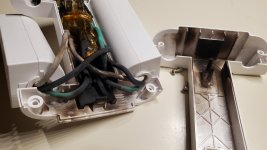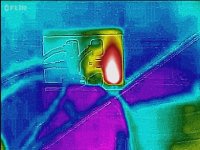dj1701
Veteran Member
I had a surge protector fry last month. I had it for years with no problems. I read that you should replace them every couple of years.
I did some research and found that Cyberpower was a pretty good brand. I replaced all of my strips and wall units with this brand. Since then I have fried one wall unit and two strip surge protectors. The strips have a breaker that is supposed to flip if you get a surge. They did not flip, they just burned.
I'm wondering if I got a knockoffs from Amazon. Any advice from my astute colleagues?




I did some research and found that Cyberpower was a pretty good brand. I replaced all of my strips and wall units with this brand. Since then I have fried one wall unit and two strip surge protectors. The strips have a breaker that is supposed to flip if you get a surge. They did not flip, they just burned.
I'm wondering if I got a knockoffs from Amazon. Any advice from my astute colleagues?


